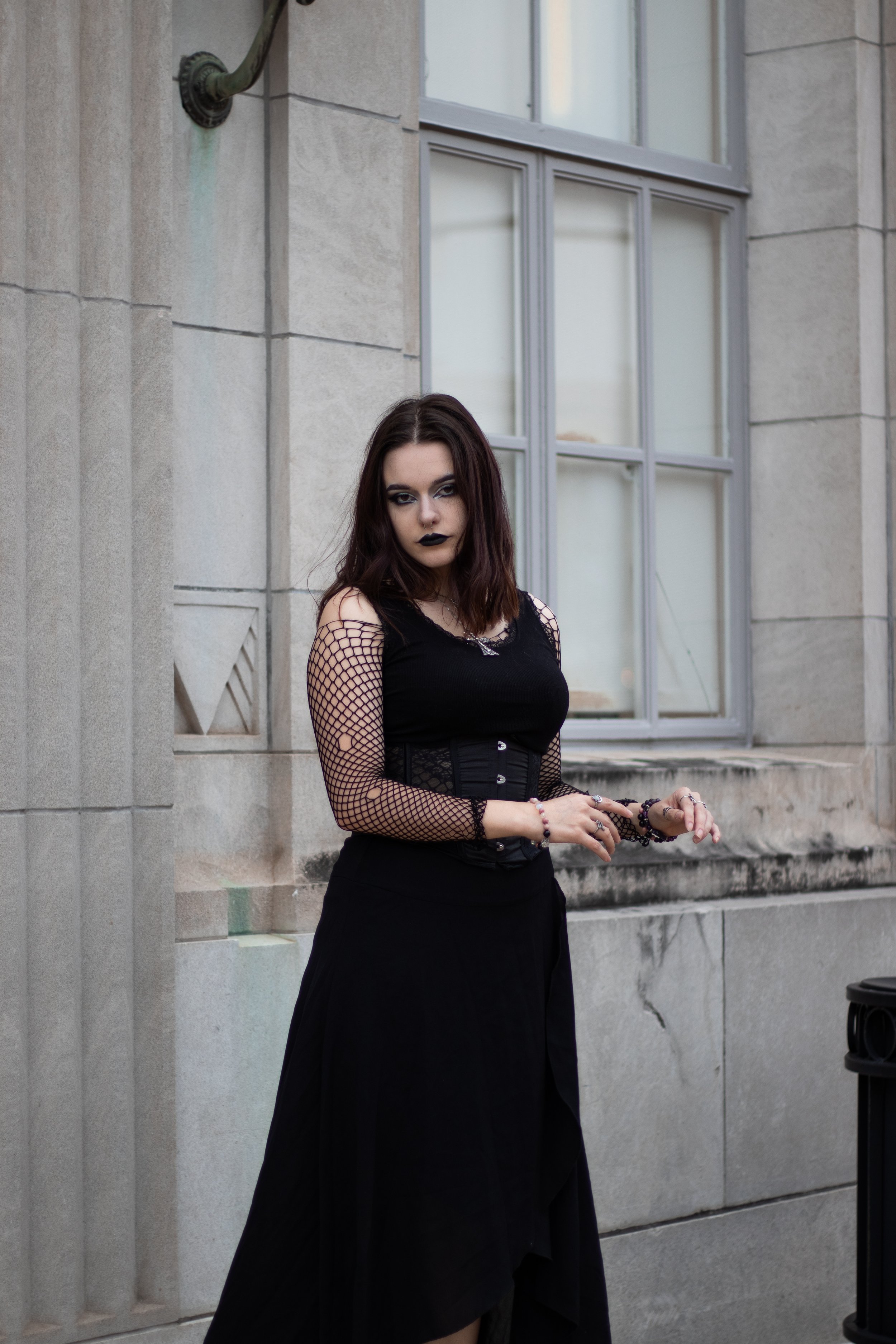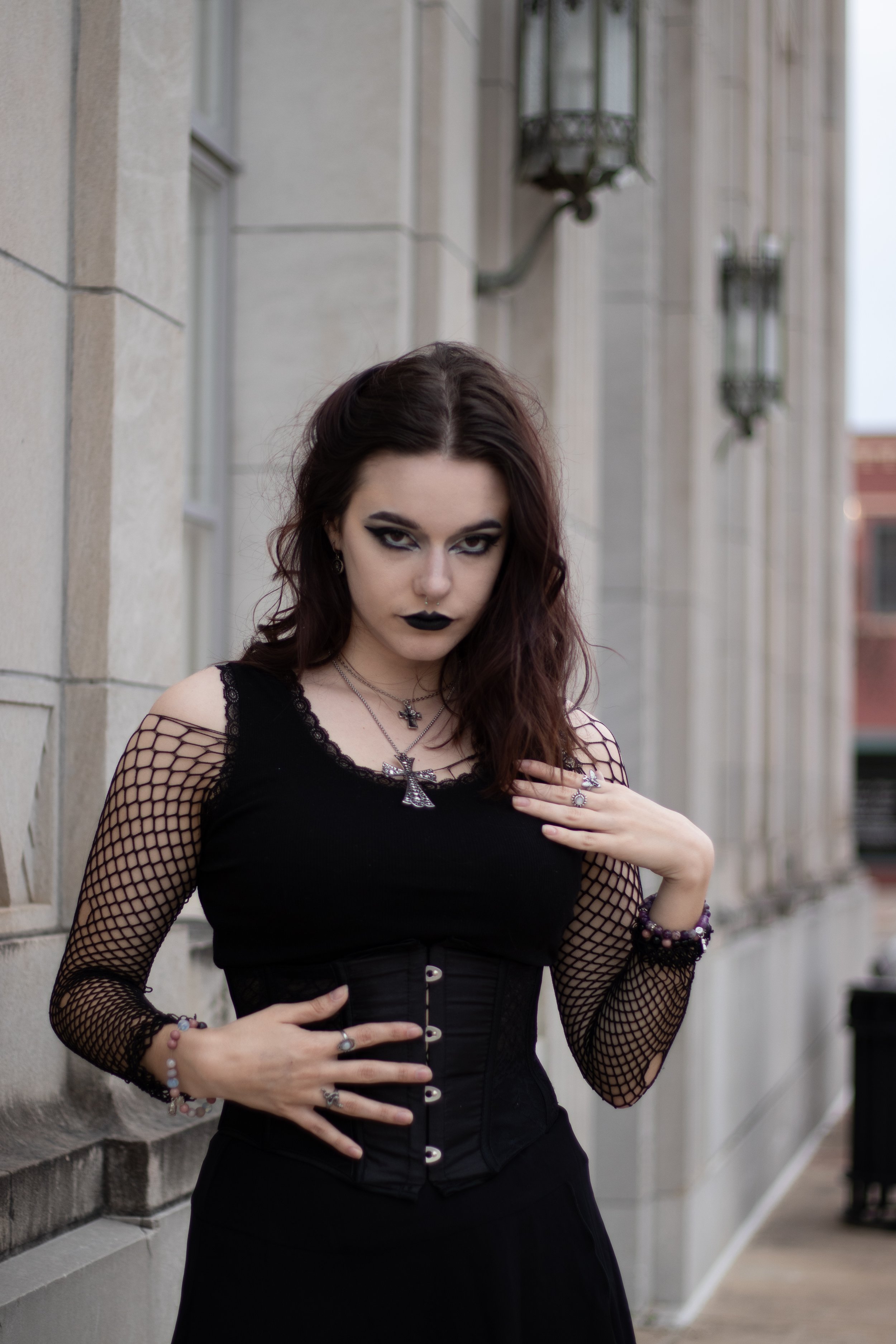The History of Goth
How does a word go from describing a group of nomadic Germanic tribes to describing social outcasts donning body modifications and shadowy wardrobes? Before we can begin to discuss the elements of the gothic subculture that set it aside from other alternative genres, it is important that we understand where the term “goth” originated. To do this, we have to take ourselves on a trip all the way back to the year 300 A.D. This was the time when the Roman Empire reigned supreme, it had held unprecedented power from its conception in the year 27 B.C.E. However, the presence of a group of nomadic Germanic people – the Goths – would be the key to dissolving this authority.
The Goths were split into two main groups, the western Visigoth tribes, and the eastern Ostrogoth tribes. The western Visigoths were descendants of an earlier Gothic people, the Thervingi, who “first invaded the Roman Empire, in 376, and defeated the Romans at Adrianople in 378.” After this defeat, the Romans and Goths were able to maintain one of the earliest examples of a frenemy status, being “both trading partners and warring combatants over the next decade or so” until Alaric I was named the first king of the Visigoths. In 410, Alaric I mounted his people for an invasion of Italy, which led to the successful sacking of Rome and the fall of the Roman Empire. This led to the Goths controlling land from “present-day Germany to the Danube and Don rivers in Eastern Europe, and from the Black Sea in the south to the Baltic Sea in the north.” For these reasons, many consider the rise of the Goths to power to be the start of the medieval period in Europe. This also marked the beginning of the term “goth” being seen as representative of themes of barbarism and destruction.
The designation of ‘goth’ fell out of favor until the Renaissance period, when it was used in a derogatory manner to describe medieval architecture. Gothic architecture was considered by those in the Renaissance period to be harsh and gaudy. The flying buttresses, extravagant stained glass windows, and harshly pointed arches were seen as tawdry in comparison to the simplicity and elegance that was characteristic of the classical and neoclassical architectural styles that rose to prominence at the time. The term was first applied to this style in the 1530s by Giorgio Vasari, who used ‘goth’ synonymously with ‘barbaric’ when classifying medieval art and architecture. In the mid-eighteenth century, ‘goth’ emerged again to identify another form of art: literature. By the nineteenth century, novels and poetry encompassing themes of the paranormal, decay, and the macabre came into the limelight through the efforts of famous authors such as Bram Stoker and Edgar Allen Poe. Similar to the aforementioned gothic architecture, gothic literature was seen as “a reaction against convention.” At this point, the conceptualization of ‘goth’ had been set in stone. Goth became indicative of a counter-culture, one that is marked by dark, gloomy, and garish motifs.
The late 1960s through the 1970s was the era of the hippie, with bands such as the Beatles and the Grateful Dead skyrocketing to fame and topping the charts. Bright colors, mellow music, and often psychedelic drugs were quintessential to the popular culture of the time. In the midst of all of this, there was a rise of yet another counter-cultural movement. This was Goth Rock. The term Goth Rock was coined by “[l]egendary music critic John Stickney…in 1967 when describing a meeting he had with Jim Morrison'' discussing the Doors. Through the 1970s, many bands emerged that would later be considered staples of the Goth Rock genre. Among these were Siouxsie and the Banshees, Joy Division, the Cure, Bauhaus, and Killing Joke. However, the Goth Rock genre was solidified in the year 1980, when Joy Division released their album Closer before lead singer Ian Curtis took his own life later that year.
When it comes to music, “every genre needs a ‘scene'”, and Goth Rock was no different. For Goth Rock, this scene was found early on in London, before spreading to other major localities like New York and Hollywood. Soon, this music composed of “plenty of reverb, melancholic melodies, minor or bass chords doused in themes of sadness and morbidity” was sweeping through the underground scenes throughout most of Europe and the United States. As with most music scenes, listeners of Goth Rock music took on specific fashion choices in order to reflect their interests to the outside world. Clothing themes included dark colors – primarily black – paired with similarly dark makeup and hair. In contrast to this shadowy look, many goth individuals wore pale or white skin makeup to make their skin appear much paler. This creates a striking contrast between the body and the stylistic choices of the individual. Additionally, religious and occult adornments became prevalent in the gothic subculture. This spread of music, accompanied by the style choices that represented it, brought the term ‘goth’ to what we know it as today.
Today, goth is a subculture that comprises many different smaller subcultures. For example, there are Cybergoths, Romantic Goths, Steampunks, Gothabillies, and countless others. While being goth is often depicted in the media as being a loner, those in the community have a rich social foundation founded on an appreciation of similar hobbies, values, and interests. In the end, we can all learn a bit from goths. Taking steps to standout against the greater society isn’t necessarily a negative thing. In fact, we believe feeling confident enough in yourself and your interests to stray this far from “the norm” is incredibly admirable.
Written by Chloe Foster, Photographer: Lisa Nguyen, Social Media: Kadence Cheang



